In this Article
Toggle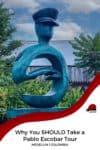


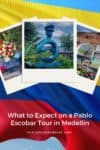
With the blood of thousands of law enforcement officials and innocent people on his hands, notorious drug kingpin Pablo Escobar is “he who should not be mentioned” in Colombia. While most Colombians want to continue to move past him, here are three reasons I believe you should still take a Pablo Escobar tour in Medellin.
A special thanks to Viator for inviting my daughter and me to experience this Pablo Escobar tour in Medellin. They provided us with two tour tickets, but you can count on me to always share my honest opinions, regardless of who foots the bill.
Whether you remember horrific headlines from the late 1980s and early 1990s or you’ve binge-watched the Narcos series on Netflix, chances are you know that Pablo Escobar was a Colombian drug lord.
But he wasn’t just any old narco.
Rather, Escobar was the head of one of the largest drug cartels in history, controlling roughly 80% of the cocaine in the US. In fact, Escobar made Forbes Magazine’s international billionaires list seven years in a row beginning in 1987. And when he died in 1993, he was one of the wealthiest criminals in history, with a net worth of about $30 billion (roughly $61.5 billion today).
Although it’s been 30 years since Pablo Escobar was killed on a rooftop in Medellin, Colombians are still fighting outdated stereotypes applied to their entire country due to the actions of one man. Three decades is not enough time to easily forget that Medellin was once the most dangerous and murderous city on the planet.
And nearly all adult Colombians have a personal connection to one of the more than 46,000 people killed by the drug lord. So it’s understandable that most Colombians do not like to talk about the “King of Cocaine.” Yet Pablo Escobar tours are one of the most popular things to do in Medellin — at least for gringos.
While some may find it a bit controversial, these are the three reasons I recommend taking a Pablo Escobar tour in Medellin.
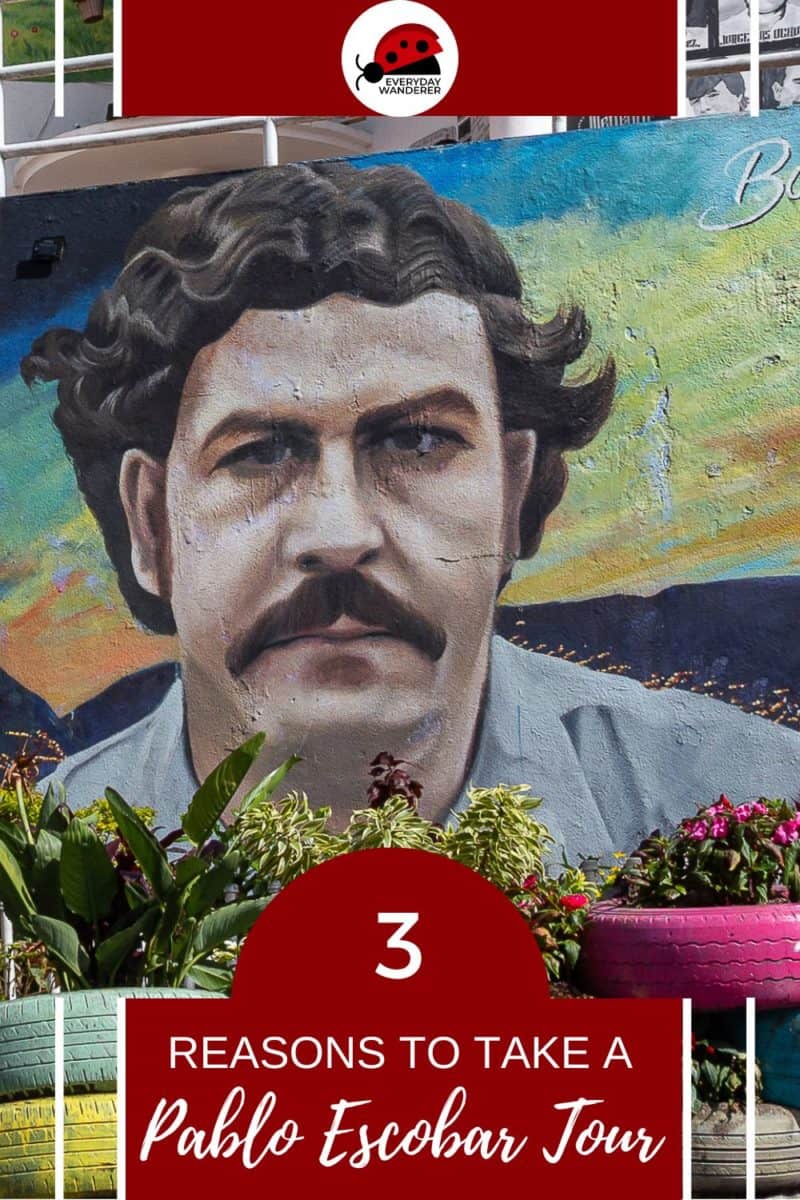
To help offset the costs of running EverydayWanderer.com, you’ll find affiliate links lightly sprinkled throughout the site. If you choose to make a purchase via one of these links, there’s no additional cost to you, but I’ll earn a teeny tiny commission. You can read all of the legal blah blah blah (as my little niece says) on the full disclosure page.
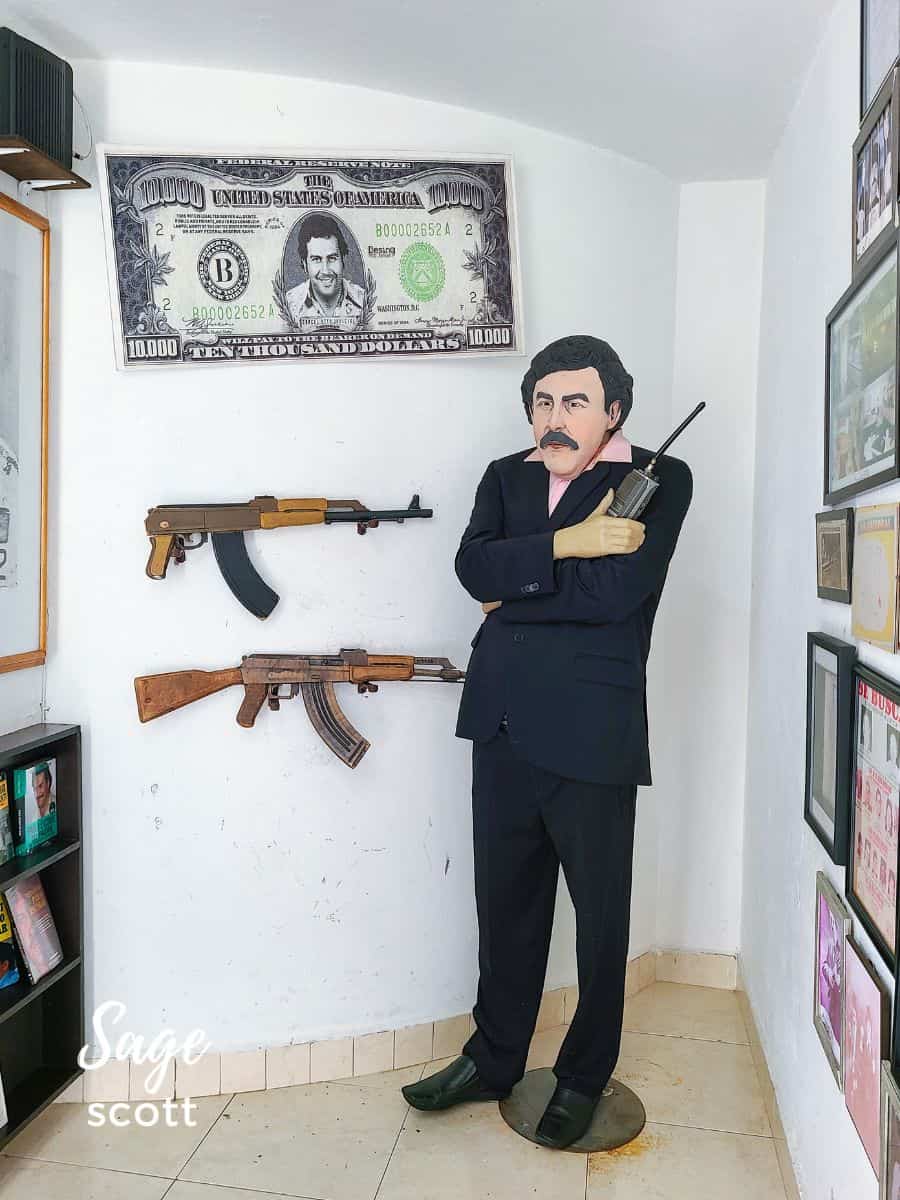
1. No Matter How Notorious, Pablo Escobar is a Part of History
Whether they are Millennials or Gen Xers, every one of my Colombian coworkers has a tragic story tied to the Medellin drug cartel – missing uncles, murdered cousins, kidnapped grandmothers, and family farms taken over by guerillas. So it’s easy to understand why Pablo Escobar is not a popular topic with most Colombians as they continue to move past that dark chapter in their nation’s history and focus on the future.
But as painful as it may be, it’s important that we not forget the dark chapters in human history. Just as there are tours, museums, and other experiences dedicated to teaching us about slavery and genocide, understanding the history of one of the world’s biggest drug lords helps reinforce that Escobar was a ruthless criminal who didn’t care who he killed — not someone to be idolized.
Therefore, I believe that taking the right Pablo Escobar tour doesn’t mean you are condoning his actions or glorifying him. Rather, you are learning from the past and paying your respects to all who helped take him down and put Colombia on its current path.
2. Visiting the Pablo Escobar Sites in Medellin Shows You Several Unique Parts of the City
While each Pablo Escobar tour is unique, most will show you:
- the rooftop where Pablo Escobar was killed,
- the impoverished neighborhood established by the drug lord,
- the Escobar family gravesite, and
- Inflexion Memorial Park Medellin
Like with just about any site or destination around the world, experiencing each in person is much different than reading about it or looking at a photograph.
Sage Advice: If your Colombian adventures take you from Medellin to Bogota, you’ll find additional Pablo Escobar sites in the country’s capital city.
Map of Pablo Escobar Sites in Medellin
How to Use This Map
- Zoom in or out using the + and – keys in the bottom right corner.
- Click the “More options” text link in the upper left corner to open this embedded map in a new browser window and take advantage of more options including the ability to send these directions to your phone.
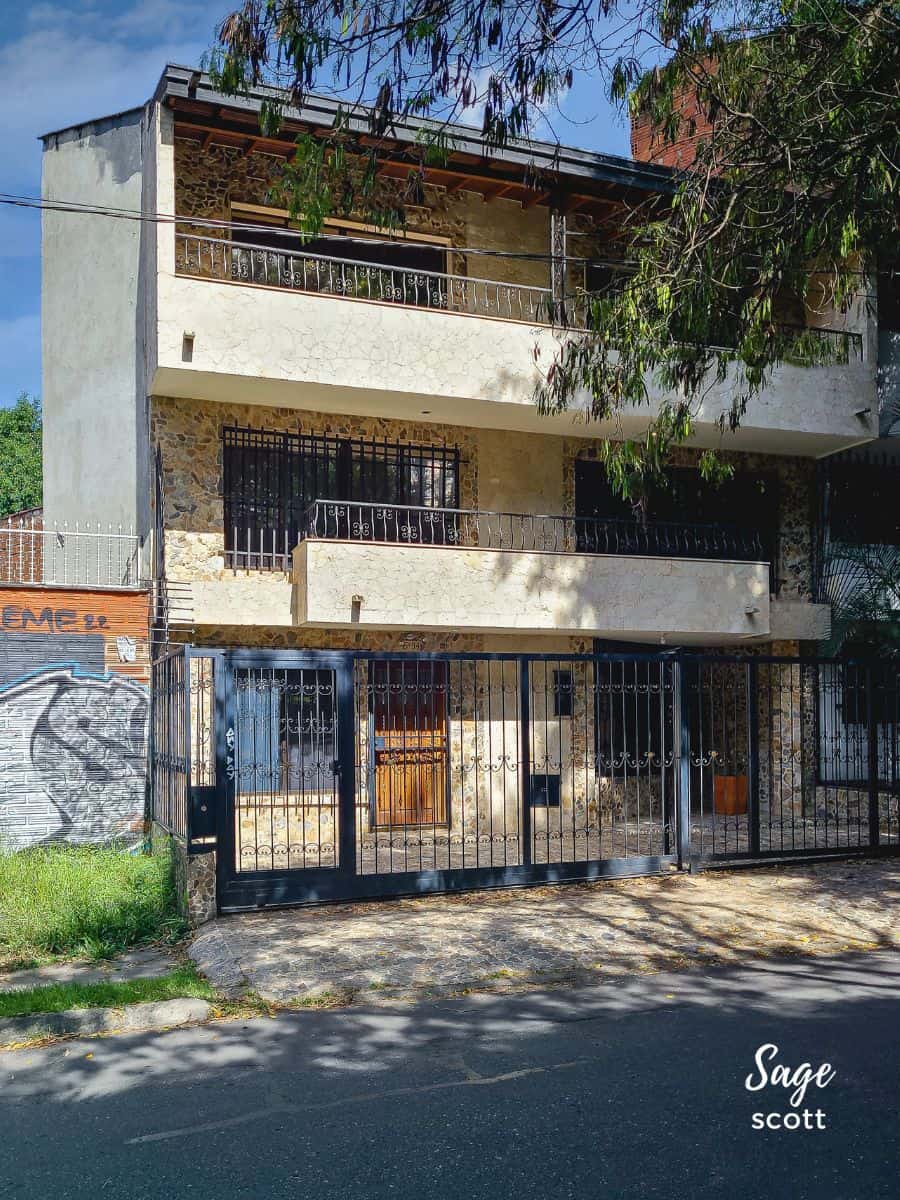
The House Where Pablo Escobar was Killed
Our Pablo Escobar tour began at an unassuming, three-story, cream-colored house located at Carrera 79B #45D–94, roughly halfway between the Atanasio Girardot Stadium and La Floresta Park. Surrounded by a tall, wrought-iron fence, there is nothing to indicate that this tree-lined residential street in the Los Olivos neighborhood of Laureles was Pablo Escobar’s final hideout before he was killed in a shootout with police 30 years ago. But if you hang out long enough, you’re sure to see a few tourists stop and snap photos of the building.
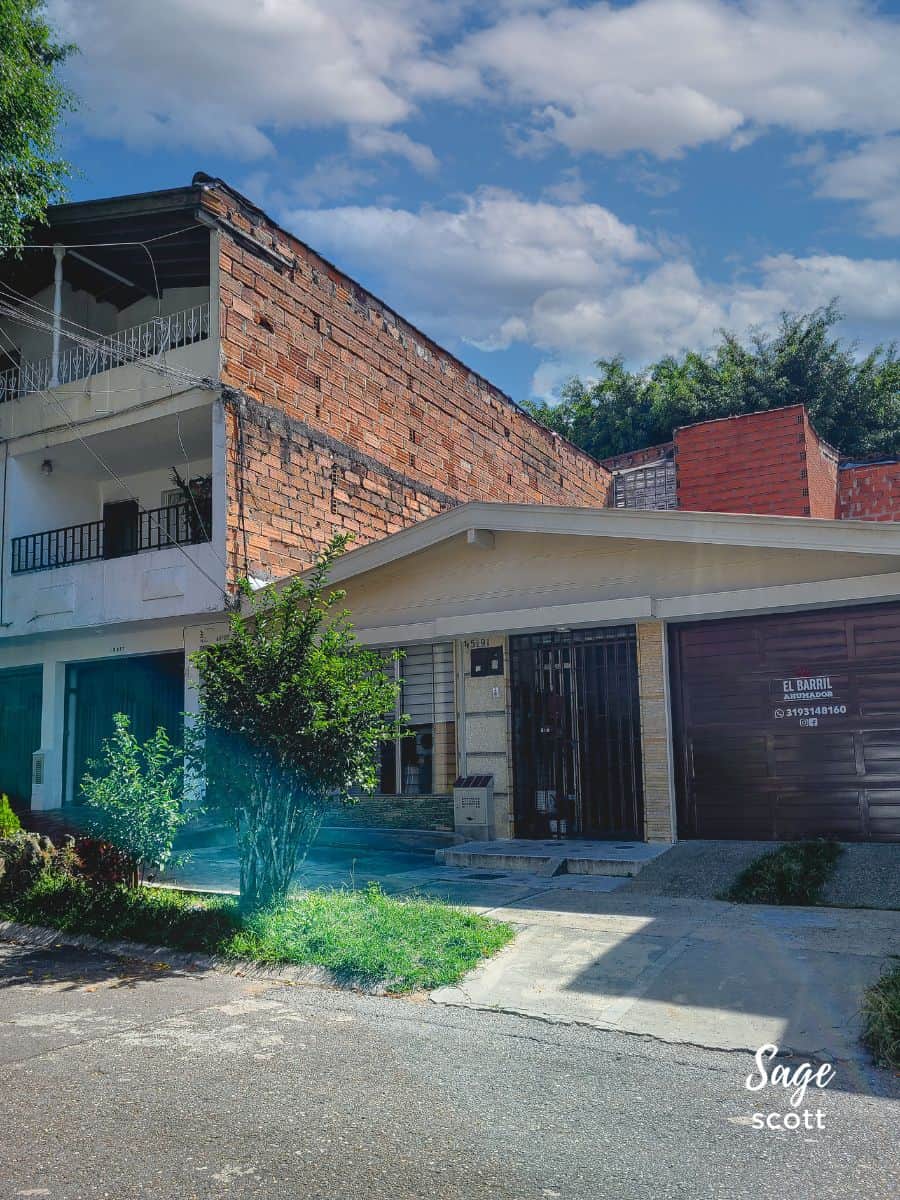
To see the rooftop where Escobar was killed, you’ll need to walk or drive around the block to Carrera 79A. Before visiting, I’d always pictured an over-the-top, Hollywood-style gun fight on the top of a skyscraper. But in reality, the rooftop where Escobar died is a slightly pitched clay-tile roof over a single story on the back of the building.
While there is no debate that the drug lord was mortally wounded on the rooftop of this building on December 2, 1993, there are conflicting beliefs about who fired the fatal shot. An autopsy showed bullet wounds in his leg and torso, but it was determined that the fatal shot went through Escobar’s ear. Our tour guide shared that members of Escobar’s family continue to insist that the drug czar killed himself, often saying he “would rather have a grave in Colombia than a jail cell in the US.”
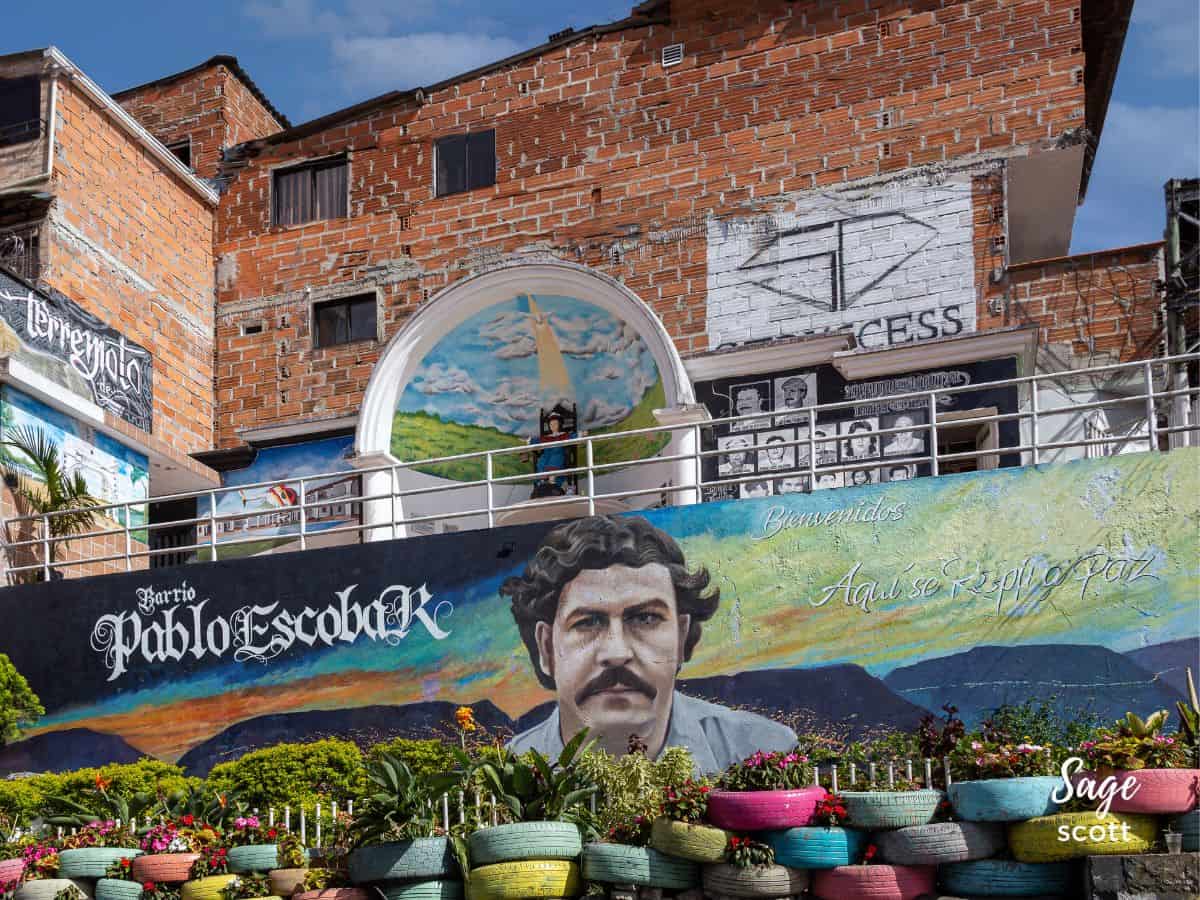
Barrio Pablo Escobar
While most Colombians view Pablo Escobar as a criminal, some residents still see him as a hero. Why? Because Escobar spent some of his drug money building housing for the poor, a school, and soccer stadiums.
One neighborhood where the drug lord is still largely revered is Barrio Pablo Escobar. What began as 250 homes for some of Medellin’s poorest residents living in the dump is now a hilly neighborhood of about 16,000 residents living in 4,000 homes.
When you visit, you’ll find a big mural of a smiling Pablo, his face decorating planters, and a small shrine to the drug lord. Locals offer walking tours of the area and typically focus on their gratitude for having a place to live rather than on the people who Escobar killed while building his cocaine empire.
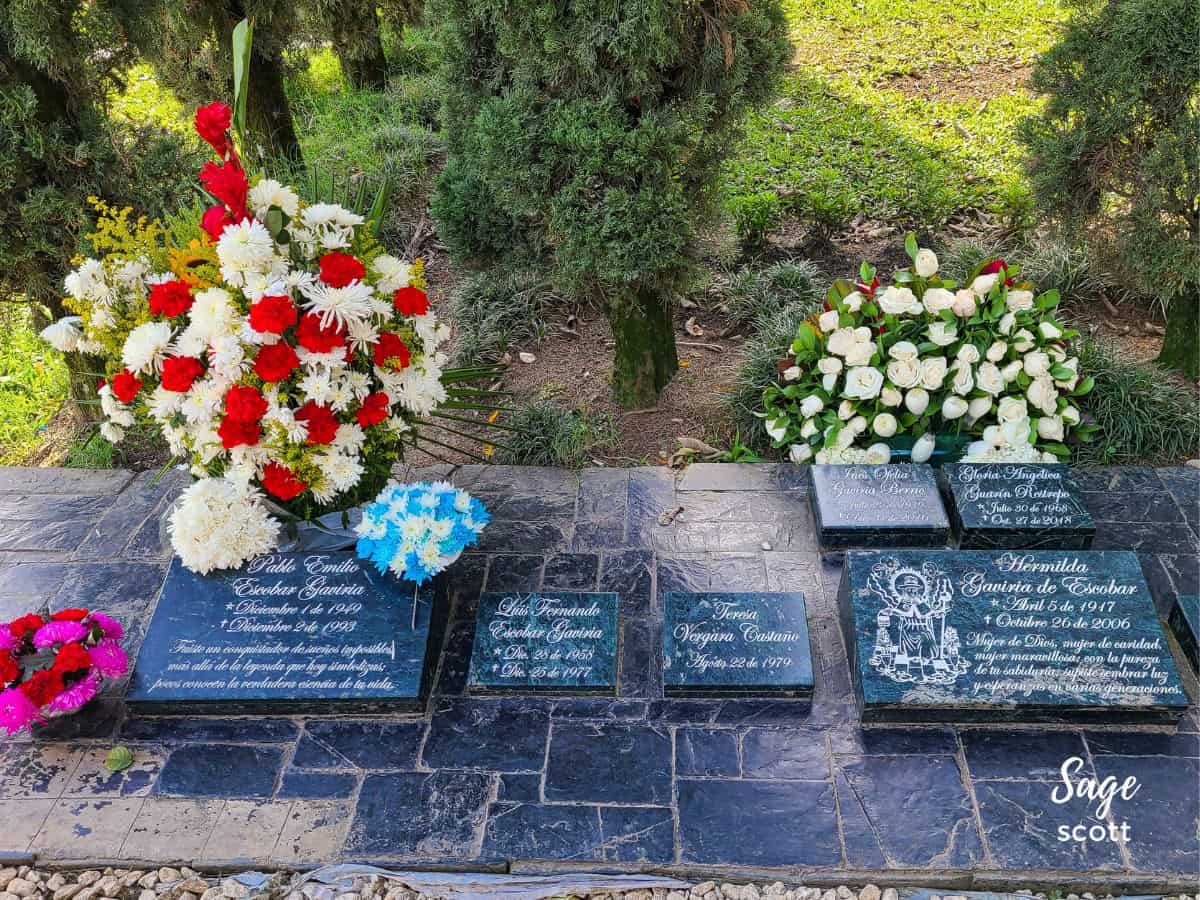
Pablo Escobar Grave at Montesacro Cemetery in Itagui
Our next stop was the Montesacro Cemetery, known locally as Cementerio Jardines Montesacro. When Escobar was buried on a hill overlooking Sabaneta in early December 1993, most people around the world applauded his death. But large crowds of Colombians flocked to his wake and funeral, grieving over the loss of the man they saw as a folk hero.
Escobar is buried near the southwest corner of the cemetery chapel with several family members (including his mother) and a highly trusted bodyguard, “El Limon,” who died in the same shootout as Escobar. Nearby, you’ll find the graves of two other Medellin Cartel henchmen. And a short walk across the green grass away from the chapel is the grave of Griselda Blanco. Known as the Black Widow and the Godmother of Cocaine, she is said to have paved the way for Escobar to create his drug empire.
Today the vast majority of Colombians are eager to move past Pablo Escobar. If you visit Pablo Escobar’s grave at Montesacro Cemetery, learn the history, but don’t leave flowers, pose for photos, or take other actions that celebrate a monster. And definitely don’t behave like Wiz Khalifa.
Sage Advice: As an active burial site, you may encounter funeral services at Montesacro Cemetery as well as people paying respect to their loved ones. Be respectful and behave as if a loved one of yours is at rest here.
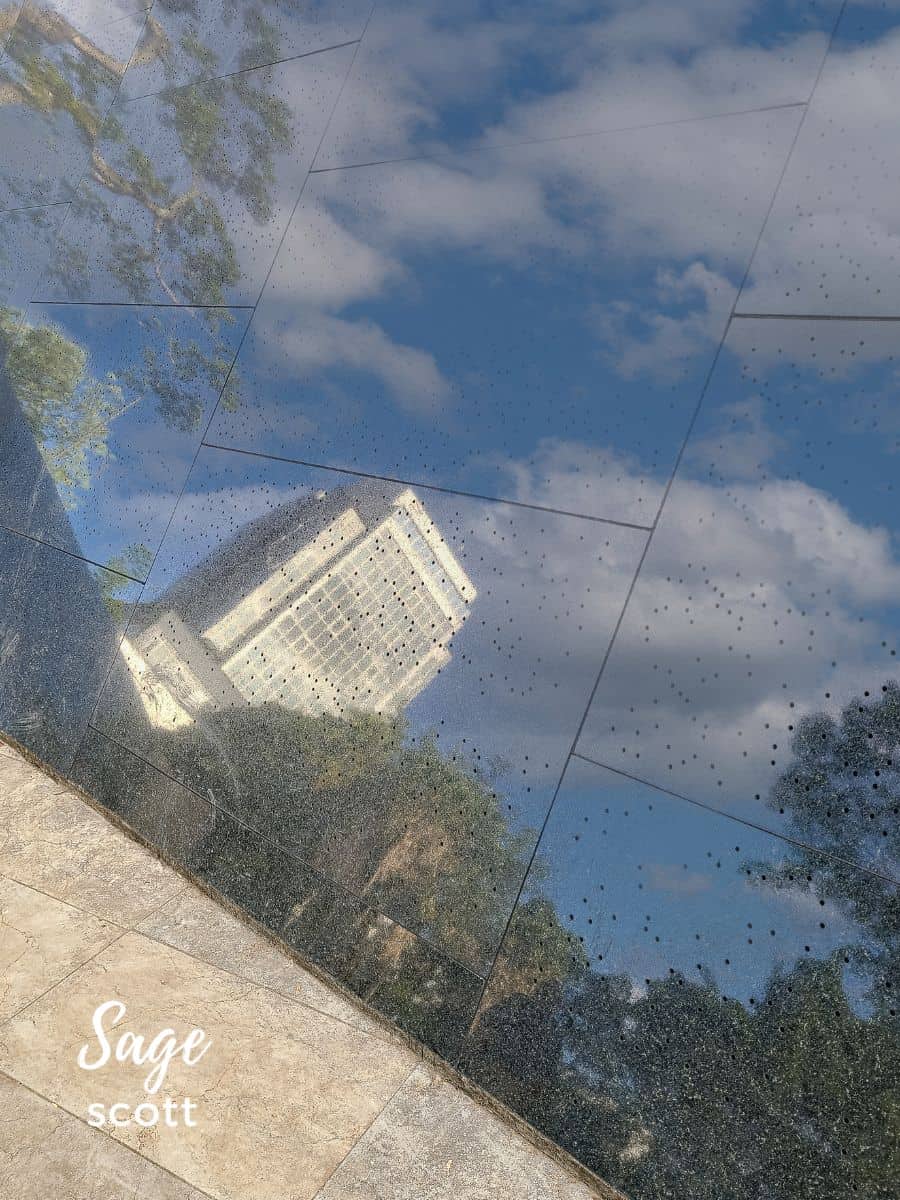
Inflexion Memorial Park Medellin
The last stop on our Pablo Escobar tour was certainly the most sobering. At one time, a lavish, eight-story, white mansion with two swimming pools and a tennis court stood tall on a block in Medellin’s El Poblado neighborhood. Known as the Monaco Building, it was demolished in 2019 and replaced by a memorial park to redirect the spotlight from Pablo Escobar and instead shine it on his many victims.
At the heart of Inflexion Memorial Park (known locally as Parque Inflexión) is a 230-foot-long, black granite wall. Bored into the north side of the wall are more than 46,000 bullet-like holes, each representing a victim of Pablo Escobar’s 11-year reign as the King of Cocaine. And, in their memory, a ray of light shines at night from each hole.
Chilling Fact: To put 46,000 deaths into perspective, that’s more than 15 times those lost in the September 11th terrorist attacks.
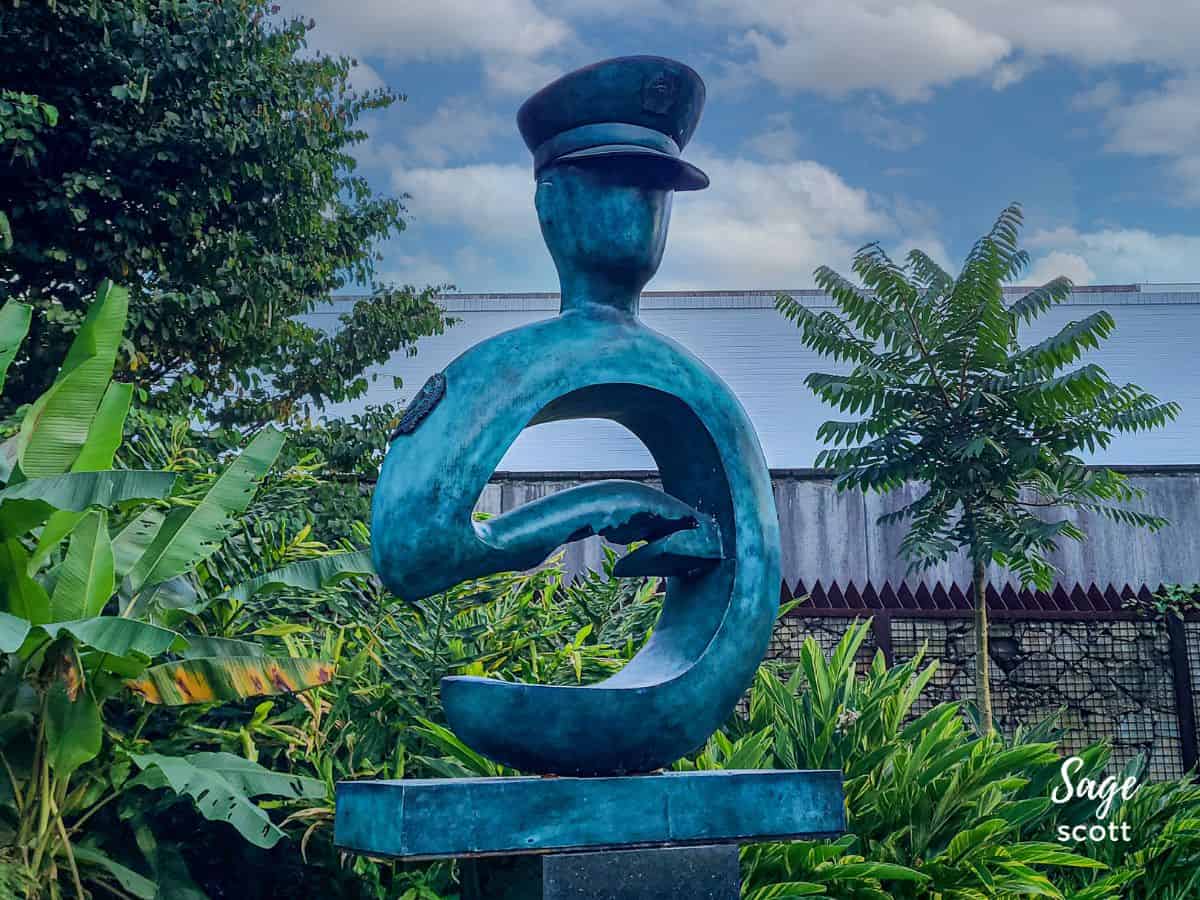
On the south side of the memorial wall is a timeline detailing the 200 bombings and other acts of violence initiated by the Medellin Cartel. The northeast corner of the park honors some of the judges, government officials, and others who were killed trying to bring down Escobar. And in the southeast corner of the park is a memorial to the more than 400 police officers killed during Escobar’s bloody reign.
Sage Advice: Pay your respects to the many victims of Escobar’s violence by placing a flower stem into a few of the holes at the memorial.

3. It Helps Illustrate How Far Colombia Has Come in a Generation
When Germany won the World Cup in 2014, a reunified nation was finally able to celebrate national pride with confidence. But that moment took seven decades after the end of World War II and 25 years after the fall of the Berlin Wall.
It’s been just 30 years since Pablo Escobar was killed in Medellin. And in that short period of time, Medellin has moved beyond decades of drug trafficking violence into a sought-after travel destination and center of innovation. The weather in Medellin is consistently mild and spring-like year round, and the city boasts a clean, well-run metro – the only metro system in Colombia.
When you take a Pablo Escobar tour to learn about his role in history, your heart will surely break for the 46,000 innocent lives lost. But it will also likely swell with admiration for all the Colombian people have done to overcome this part of their history in one generation. Despite all they’ve been through, Colombians are some of the happiest people in the world. And surviving such an awful past has made Colombians appreciate what they have now — a bright future full of hope.
Should You Take a Pablo Escobar Tour?
If you want to learn more about Colombian history and the role Pablo Escobar played in shaping the nation into what it is today, then you should definitely take a Pablo Escobar tour. But choose your tour carefully to ensure you select an option like this one that focuses on history.
I do not recommend a drug lord tour or any option that tries to paint Escobar in a positive light.
Other Pablo Escobar Sites in Medellin (and Nearby)
While our Pablo Escobar tour only included the four destinations listed above, other sites you may want to visit in and around Medellin include:
La Catedral
Once a luxury prison built by Pablo Escobar with a soccer field, nightclub, and bar, the drug lord was allowed to throw lavish parties filled with drugs and alcohol and continue running his business while “incarcerated” here. Today La Catedral is a retirement home with some of the best views in Medellin.
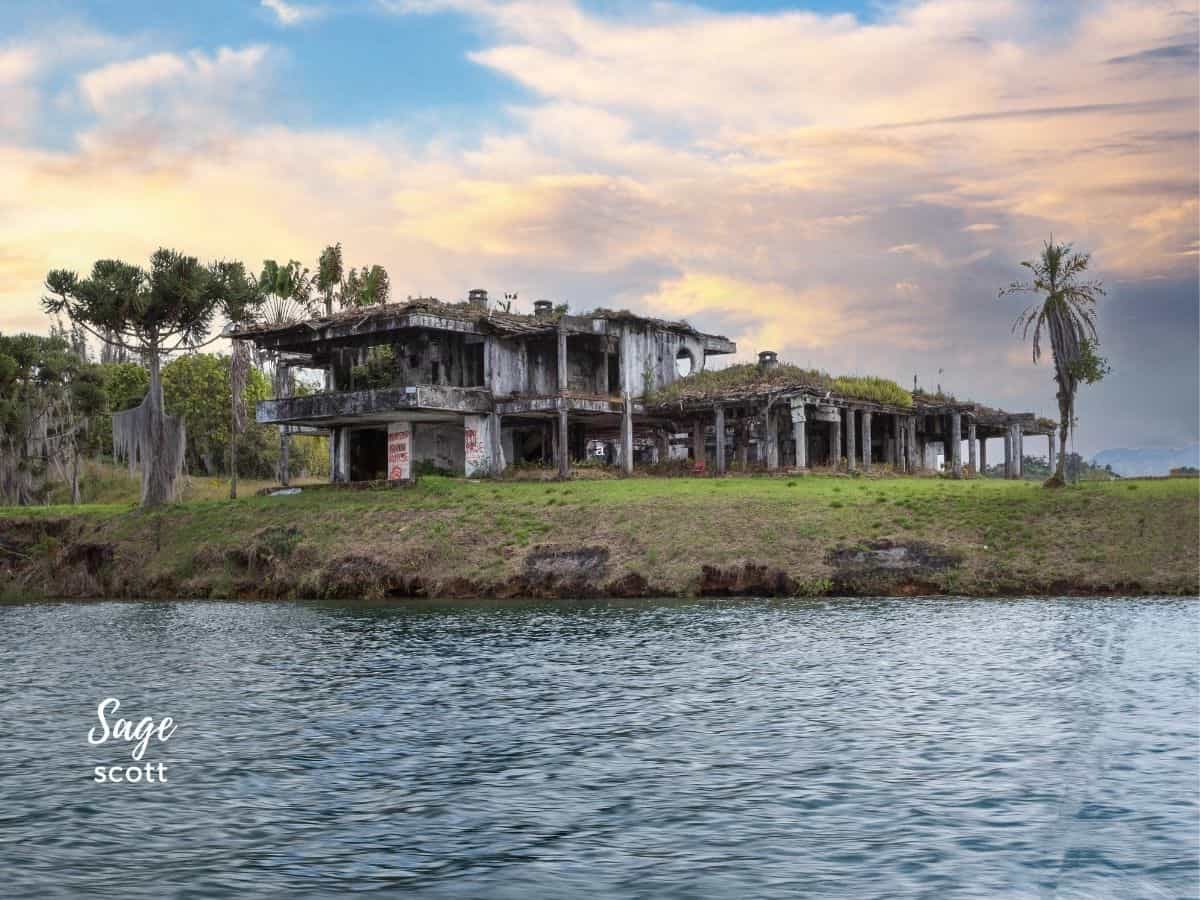
La Manuela
In the Andean resort town of Guatape (about a two-hour drive directly east from Medellin), you’ll find the ruins of a luxurious mansion on 20 waterfront acres. Named La Manuela after Escobar’s daughter, the heavily-guarded compound included a pool, tennis courts, stables, and a discotheque.
In 1993, a few months before Escobar was shot dead by Colombian authorities in Medellin, a vigilante group known as Los Pepes shoved 450 pounds of TNT into a bathroom at La Manuela resulting in an explosion. Although the estate has steadily decayed over the years, you can see what remains of La Manuela when you visit Guatape. For the best views, paddle, sail, or otherwise boat past it on the reservoir.
Other Commonly Asked Questions About a Pablo Escobar Tour
Can you go on your own Pablo Escobar tour?
Sure you can (and I’ve provided several suggested stops above). However, when you take an organized Pablo Escobar tour (like the one we took), you’ll have a local guide who knows Medellin, can easily get you to and from each destination, and will expertly answer your questions. Our tour, led by an English-speaking guide, even included hotel pickup and return in an air-conditioned vehicle!
If you live in Medellin or otherwise know the area well, you’re probably fine to go on your own Pablo Escobar tour. But if you’re visiting Medellin for the first time or don’t know each of these destinations well, I highly recommend taking an organized tour.
How safe is a Pablo Escobar tour?
Provided you book a highly rated and professional tour (like the one we took), the experience is quite safe. Personally, I would be very hesitant to visit some of the stops on the tour – specifically Barrio Pablo Escobar – without an experienced local guide.
Have You Taken a Pablo Escobar Tour in Medellin?
Which tour did you take? Was it worth it? Any additional tips and tricks to pass along? Share your experiences in the comments section below.

Looking for more information to plan your Colombia vacation? Check out my additional recommendations to help you plan your trip to Colombia including what to see and do in Colombia, the best places to stay in Colombia, where to eat in Colombia, and more!
Ready to Go?
Use These Helpful Links to Book Your Trip!
- Find low fares with airfarewatchdog and Skyscanner
- Book your plane ticket with Expedia or Kayak
- Or take the scenic route on an epic road trip in a rental car or an RV from Outdoorsy
- From hotels to private homes, find the perfect accommodation with Hotels.com or Vrbo
- Travel in style with a suitcase, carry-on, backpack, or handbag from eBags
- Save on tickets to attractions, sightseeing tours, and more with CityPASS, Tiqets, and Viator
- Don’t leave home without travel insurance from AXA
- Discover the sights, history, and culture of your destination with an interactive scavenger hunt
- Need something else to plan your perfect trip? Visit my travel resources page for more trusted partners. Happy wandering!
Thank you for sharing!

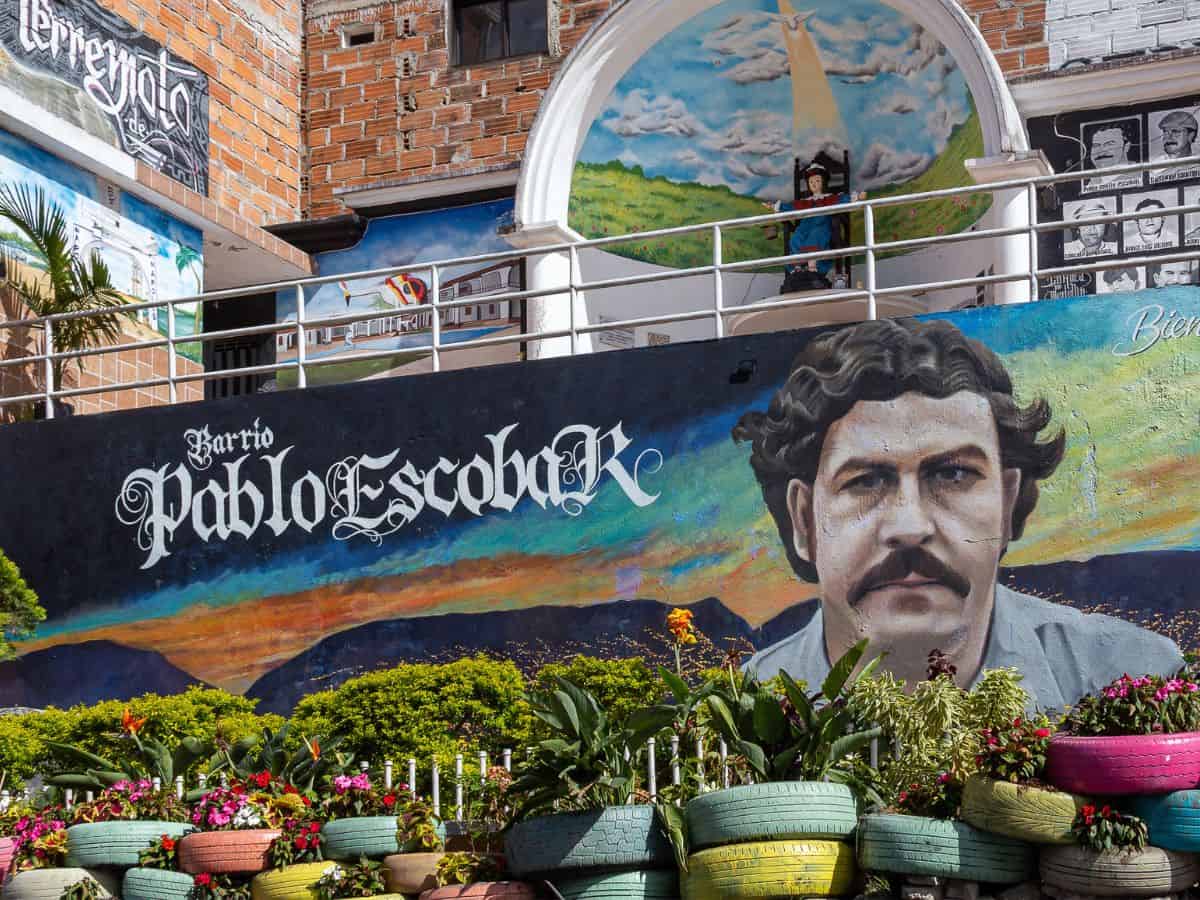


I’m not familiar with Pablo Escobar but it is fascinating to recount his life and what the Columbians have overcome in his shadow. I’d be interested in taking the tour to learn more about the area and the people.
The spirit of the Colombian people and all that they have overcome in a relatively short amount of time is incredibly inspiring.
I would like to take this tour from the historical perspective. I bet the bullet hole side of the memorial to Pablo Escobar’s victims would be stunning and impactful at night.
The memorial is very moving. I continue to be absolutely in awe of the Colombian people — their resiliency, their positivity, and all they have overcome in such a short period of time.